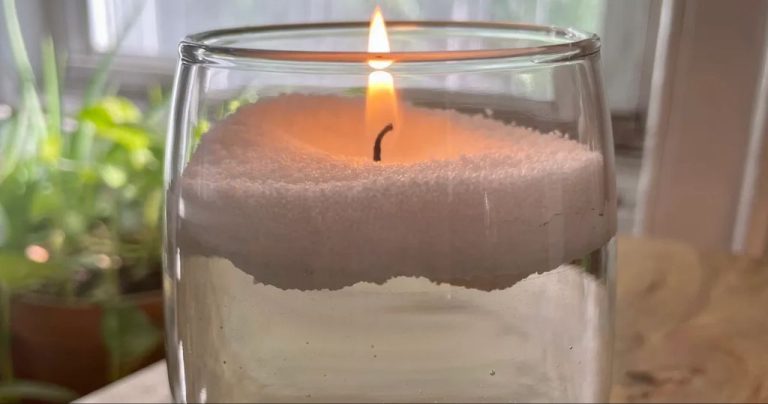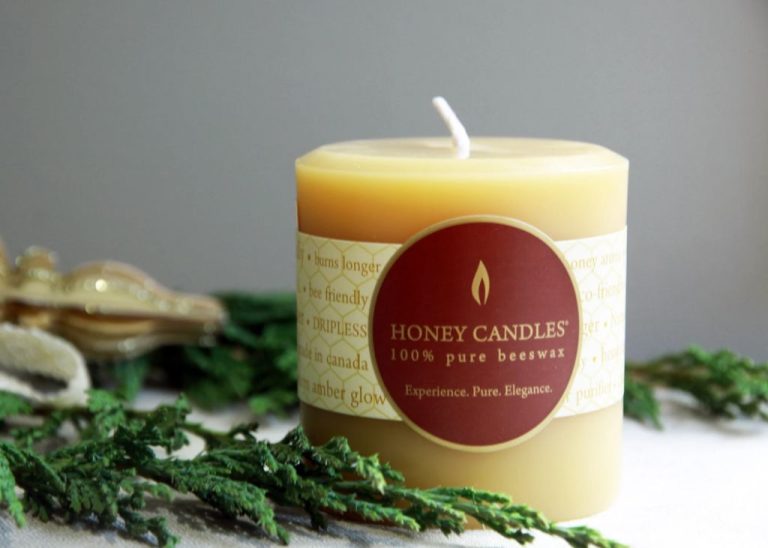How Long Does Gw 464 Soy Wax Take To Cure?
What is Soy Wax?
Soy wax is a vegetable wax made from the oil of soybeans. After harvesting, the beans are cleaned, cracked, de-hulled, and rolled into flakes (https://www.candlescience.com/learning/what-is-soy-wax/). It is commonly used to make candles and is an alternative to paraffin wax, which is a petroleum product. Soy wax is considered more environmentally friendly since it comes from a renewable resource.
Soybean oil is hydrogenated to convert it into a solid wax. The level of hydrogenation determines the melt point, hardness, and clarity of the finished wax. Popular soy wax blends include Golden Brands 464 and EcoSoya CB-Advanced (https://thecandlestudio.com/blog/why-choose-a-soy-wax-candle-the-benefits-of-soy-wax).
The main components of soy wax are hydrocarbons, free fatty acids, and triglycerides. It has a higher natural oil content compared to paraffin, which allows soy candles to burn slower and hold scent better. Soy wax also has a lower melting point than paraffin, resulting in a smoother topside appearance.
Properties of GW 464 Soy Wax
Golden Brands GW 464 soy wax is manufactured by Cargill and has some unique properties compared to other soy wax blends.
GW 464 has a melt point between 129-135°F, which is higher than many other soy waxes like GB 444 or GB 415 (Source: https://www.candlescience.com/wax/golden-brands-464-soy-wax/). The higher melt point allows candles made with GW 464 to retain their shape and burn slower in warmer environments.
Additionally, GW 464 is known for being harder and more opaque than other soy waxes. The opacity helps mask imperfections in container candles and provides a smooth, even appearance as the wax burns (Source: https://soybeads.com/product/gw-464-soy-wax/).
These properties make GW 464 well-suited for container candles, especially large jars, as it can hold scent and provide a strong throw without collapsing or bending.
How Soy Wax is Used
Soy wax is a popular candle making wax and has many applications. Some of the most common uses of soy wax include:
Container Candles
Soy wax is commonly used to make container candles. Its low melting point allows container candles to melt evenly and avoid issues like wet spots. Soy container candles also tend to have excellent hot and cold throw. Popular container candle vessels for soy wax include jars, tumblers, and tins.
Pillar Candles
While paraffin may be better suited for pillars, soy wax can also be used to make pillar candles. Pillar candles made with soy wax offer an eco-friendly alternative to paraffin. Soy pillars burn slower and cooler than paraffin, resulting in less soot and smoke.
Melts
Soy wax melts well, making it a top choice for wax melts. Melts are commonly poured into clamshells or silicone molds. Soy wax melts offer vibrant fragrance and excellent scent throw.
Soap Making
In addition to candles, soy wax can be used to make soap. Adding a small amount of soy wax to cold process soap recipes can help harden the bars. Soy wax also makes the soap smoother.
Curing Soy Candles
Curing is an important part of the candle making process when working with soy wax. Curing refers to allowing enough time for the candle to rest after it is poured and cooled so that the wax molecules can fully align and settle. An adequately cured candle will have an even melt pool, extended scent throw and a smooth topside with no frosting or wet spots.
Curing serves several purposes for soy candles:
- Allows the wax to crystallize fully so it will melt and burn evenly.
- Gives the fragrance time to set in the wax so it will have a stronger scent throw.
- Lets any bubbles or frosting dissipate so the candle has a smooth surface.
Many candle makers recommend curing soy candles for 1-2 weeks before burning them. This allows the soy wax sufficient time to stabilize for optimal performance. Rushing the cure may result in issues like tunneling. Curing times can vary based on wax brand, pouring temperature, container size and other factors. Testing curing times with your specific process can ensure your candles are fully cured before selling or gifting them. With proper curing, soy candles will burn cleanly and deliver an even wax pool and consistent scent.
Curing Time for GW 464 Soy Wax
The typical recommended curing time for candles made with GW 464 soy wax is 1-2 weeks before burning. However, the necessary curing time can vary depending on the diameter and size of the candle.
For container candles, a standard 4-5 inch diameter candle generally needs about 1 week of curing time. Larger container candles with diameters over 5 inches may need closer to 2 weeks for the soy wax to fully cure.
Pillar candles and novelty candles like shapes or figurines also tend to require longer cure times than standard containers. The larger the candle and thicker the wax, the more time is needed for the inner wax to completely cure. Novelty candles often need 2 weeks or longer to fully cure.
According to testing from Golden Brands, a leading manufacturer of GW 464 soy wax, candles should be allowed to cure for a minimum of 1 week before burning, with thicker candles needing longer.1 Other makers recommend allowing GW 464 candles to cure for at least 2 weeks for best results.2
Properly curing GW 464 soy wax candles allows time for the wax to completely solidify and the fragrance to stabilize within the wax. This helps ensure even burning, wax adhesion, and maximum hot throw from the candle.
Tips for Proper Curing
There are a few tips to follow to ensure your soy candles cure properly:
Store candle upright – Candles should be stored standing straight up and down during the curing process. This prevents warping of the wax and allows the candle to cure evenly across the entire surface.
Keep wax melted during cure – It’s important that the wax remains liquified in the vessel during curing. Allowing the wax to completely harden can lead to cracking and separation from the container. Maintain a warm room temperature to keep the wax melted.
Maintain room temperature – The ideal curing temperature is around 70-80°F. Colder temperatures will slow down cure time. Warmer temperatures can cause sinking or frosting issues. The curing area should remain as consistent in temperature as possible.1
Following these basic tips will help ensure your soy wax candles cure fully and correctly before burning. Taking the time to properly cure candles makes a big difference in performance and burn quality.
Testing if a Candle is Cured
There are a few ways you can test if your soy candle is fully cured and ready to burn:
Check for even melt pool – Burn the candle for a few hours and look at the melt pool when blown out. The wax should have an even melt across the surface with no holes or pits, which indicates thorough curing.[1]
No wet spots on sides – A properly cured soy candle will burn clean with no oily residue or wet spots appearing on the sides of the jar.[1]
Good scent throw – As the candle cures, the scent will become stronger and fill the room more. Test the scent throw after curing by lighting the candle for 15-20 minutes. You should notice a strong even fragrance.[2]
If the melt pool and sides look good and the scent is strong, your soy wax candle is fully cured and ready to enjoy.
[1] https://sojourncompany.com/blog/how-long-should-soy-candles-cure/
[2] https://www.reddit.com/r/candlemaking/comments/102c37v/how_do_you_know_when_a_candle_is_cured/
Troubleshooting Curing Issues
If your soy candles are not curing properly, there are a few common issues to watch out for. The two main problems with curing are wet spots in the wax and sooting on the wax surface.
Wet spots in the wax after curing typically indicate that the candle is undercured. The wax still contains moisture and volatile compounds that have not had sufficient time to evaporate. Allowing the candle to cure for a longer period, such as up to 14 days, can help eliminate wet spots. According to the Soy Wax Troubleshooting Guide, wet spots are a sign that the fragrance has not fully bonded with the wax.
Sooting on the top of the wax is a sign that the candle is overcured. When candles cure for too long, more of the fragrance and oils evaporate. This can result in the wick clogging during burning, leading to soot. Reduce the curing time to 7-10 days to prevent excessive evaporation and sooting issues.
By carefully adjusting the soy wax curing time and testing for wet spots and sooting, you can troubleshoot curing problems. Allowing the proper amount of time for a full cure without going too long will result in the highest quality finished soy candles.
Storing Cured Candles
Properly storing cured soy candles is important for preserving fragrance and quality over time. Here are some tips for storage:
Keep candles out of direct sunlight. Sunlight can cause the fragrance oils in soy wax to fade more quickly. Store cured candles in a dark, opaque container like a drawer, box, or bin. According to Harlem Candle Company, direct light can also soften candle wax, causing issues like sinkholes [1].
Avoid extreme temperatures when storing cured soy candles. Fluctuating temperatures can impact candle quality over time. The ideal storage temperature is below 80°F to keep wax from getting too soft [1]. A consistently cool, dry location works best.
Allow wax to fully solidify before moving candles. According to redditor feedback, moving candles before they have cured can cause issues like cracks or dents [2]. Let soy wax harden completely first.
Burning Cured Soy Candles
When burning a cured soy candle, it’s important to follow proper procedures to ensure performance and safety. Here are some tips for burning cured soy candles:
Before lighting, use scissors or nail clippers to trim the wick to 1⁄4 inch in length. This helps prevent issues like tunneling and smoking which can occur if the wick is too long. As referenced from Naturasoy, trimming the wick to 0.5 cm (about 1⁄4 inch) before lighting is recommended for the first burn of a new soy candle (1).
When lighting the candle, allow it to burn for 1-2 hours per inch of the candle’s diameter. This allows the melt pool to reach the edges so the entire candle achieves an even burn. Burning too briefly can lead to issues like tunneling.
Allow the candle to cool and completely re-solidify before relighting it. Soy wax needs to re-set between burns. Burning too soon can cause sink holes, uneven wax pools, and other problems.
Following these simple guidelines will allow you to enjoy the full experience of your cured soy candles. Burning properly helps maximize fragrance, prevent issues like smoking and tunneling, and get the most out of your candle.






